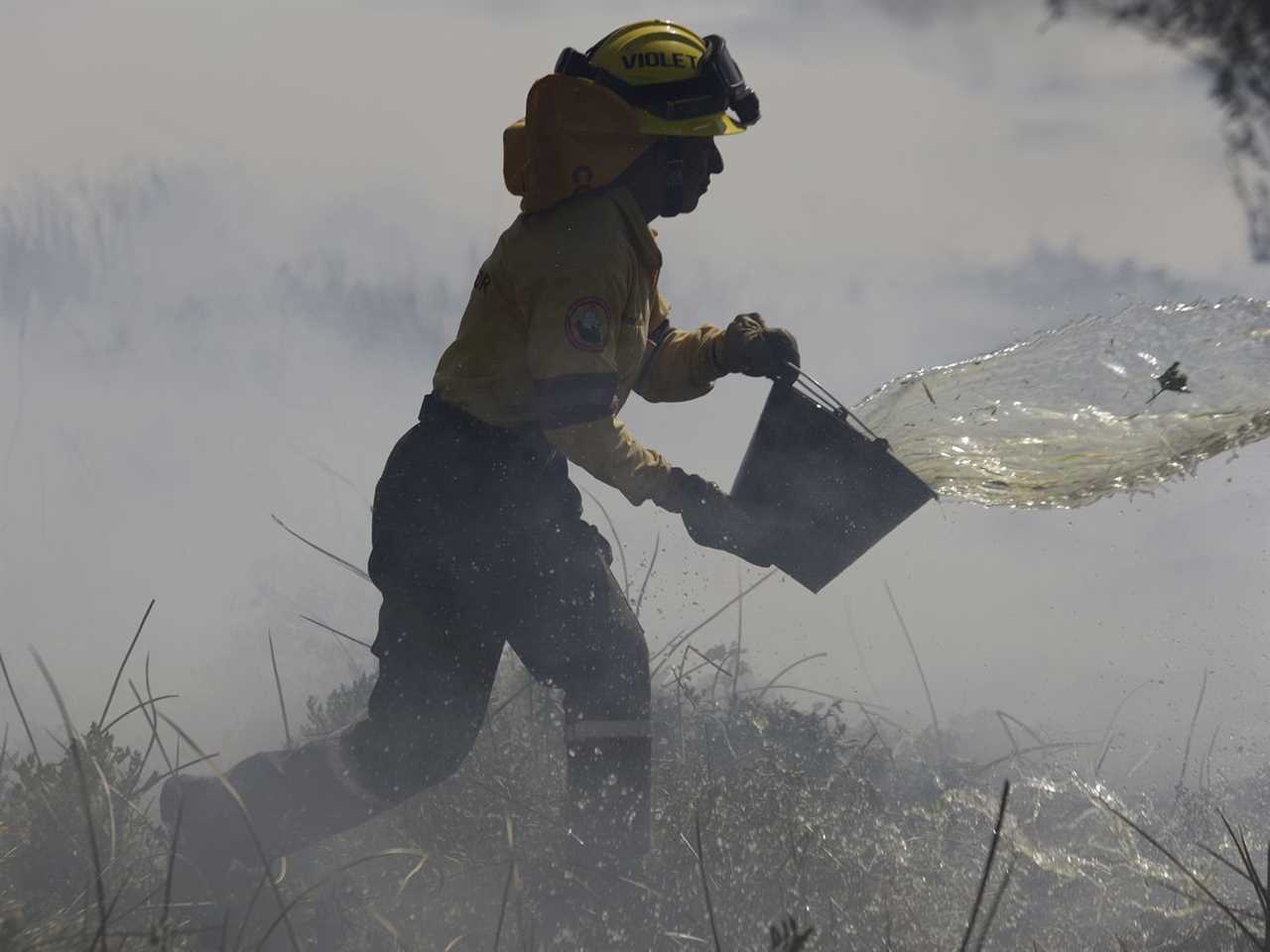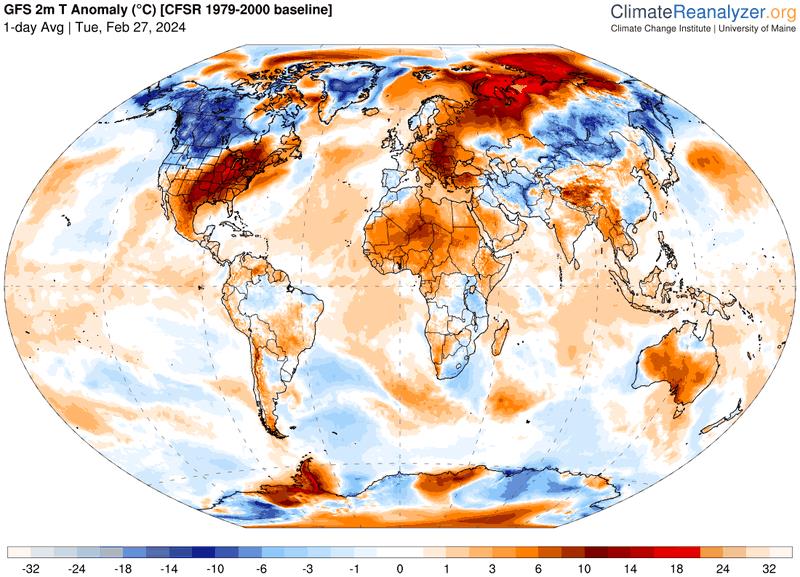
2024 is already shattering heat records as temperatures soar around the world
After last year was the warmest on record, 2024 is already off to a ripping hot start.
January 2024 was the warmest January ever measured, and February is likely to follow.
Global temperatures have fallen back below record levels in recent days, but February 2024 remains the odds-on favorite to be the warmest February on record: pic.twitter.com/AWoOsCN1BR
— Zeke Hausfather (@hausfath) February 21, 2024
Many parts of the world are experiencing unprecedented heat — both in the Southern Hemisphere, where it’s summer, and in the Northern Hemisphere, where it’s winter.
The list of countries is varied and far-reaching: Japan, Kenya, Nigeria, Brazil, Thailand, Australia, and Spain have all experienced extreme or record-breaking temperatures in the past few weeks. The US, which experienced a bitter cold snap across much of the country in January, is now setting new highs in the Midwest and the South. Wildfires have ignited in Texas, Colorado, and Nebraska, sending smoke plumes toward the East Coast. There are even wildfires burning underground in Canada that initially erupted during the record-wildfire season last year.
The magenta dots... they are all monthly record highs (breaks or ties). Remarkable. pic.twitter.com/mvnBczZY54
— Jeff Berardelli (@WeatherProf) February 27, 2024
Even the oceans are at never-before-seen temperatures, which portends more danger for corals and could fuel more intense hurricanes.
If the current conditions seem to echo the extreme weather storylines of 2023, that’s because many of the factors behind them remain in place. The world is still in the grips of El Niño, the warm phase of the Pacific Ocean’s temperature cycle. El Niño tends to amplify warming around the world, particularly between November and March — and this El Niño is especially strong. The warm ocean water near the equator, which has been about 3.2 degrees Fahrenheit hotter than the average, also leads to more evaporation and thus more rainfall, energizing the atmospheric rivers that have drenched the West Coast and triggered floods this year.
And underneath it all, humans are continuing to pump heat-trapping gases into the atmosphere at an alarming rate by burning coal, oil, and natural gas, lifting carbon dioxide concentrations up to levels never seen by humans and not experienced on Earth for millions of years.
The warm weather we’re seeing now is directly in line with what scientists expect as the planet heats up, and conditions once seen as extreme will become far more common in the coming decades.
Some of strongest climate change effects manifest in the winter
Earth’s warming due to climate change isn’t spread evenly across the globe or throughout the year. Polar regions are warming up to four times as fast as the rest of the world, for instance.
Further away from the poles, wintertime is heating up fast. In the US, many northern states are seeing winters warm twice as fast as summers, according to the fifth National Climate Assessment report, published last year.

Climate Reanalyzer
One reason winters are heating up faster is that cooler, drier winter air tends to have a stronger, more consequential response to temperature increases. Every rise in air temperature of 1.8 degrees Fahrenheit means another 7 percent more moisture retained. So, starting from a dry and frigid baseline, increasing humidity in the air leads to relatively more heat trapped near the ground, raising temperatures.
Another way climate change affects winter is precipitation. When temperatures rise above 32 degrees Fahrenheit, it leads to more rain than snow. Regions like the Western US rely on snow accumulation in the mountains to store water for use throughout the year, and more rain than snow can mean more flooding in the winter and drought in the summer. On the other hand, if air temperatures rise but stay below freezing, that can lead to more snowfall since there is more water in the air.
The Southern Hemisphere’s summers are getting more intense
It’s been a searingly hot summer south of the equator, and the region also had an unusually warm winter. Cities like Buenos Aires, Argentina, saw their hottest winter months in more than a century. In Australia, it was the hottest winter ever recorded.
The Southern Hemisphere has some different dynamics from the Northern Hemisphere. The big one is that there is proportionately more ocean than land in the south. Oceans absorb heat and act as buffers against big temperature swings, so winters usually don’t get too chilly and summers don’t often reach sweltering levels.
But the world’s oceans have been unusually warm since last year, and that’s helped maintain warm air over land masses in the Southern Hemisphere. And South America in particular is in the line of fire for El Niño. The region has already experienced both extensive flooding and drought fueled by warmer water off the Pacific coast, leading to shifting rainfall patterns.
The heat has also contributed to wildfires across the continent. In Chile, wildfires have already killed more than 120 people.
It’s hot underwater too
The world’s oceans near the equator right now remain at record high temperatures. Water temperatures have topped 90 degrees Fahrenheit in regions like the Caribbean. In addition to absorbing heat, oceans soak up close to 30 percent of humanity’s carbon dioxide emissions.
The combination of higher temperatures and more carbon dioxide is changing the chemistry of the water. In recent months, this has threatened fragile ecosystems like coral reefs. Off the Florida Keys, corals suffered mass bleaching events and die-offs driven by marine heat waves.
The warm waters have reached as far south as Antarctica, which saw a record low extent of sea ice last year. As summer has picked up, sea ice around the southern continent is no longer at absolute record low levels but still far below what’s typical.
Antarctica is important because it influences both the ocean and the sky. As the waters around it freeze and thaw, and as its glaciers melt into the sea, the region alters how nutrients flow in ocean currents and shapes clouds and rainfall around the world.
The looming question is whether 2024 will reach new temperature highs over the rest of the year. El Niño is likely to persist until April, but it’s not clear how much the planet will cool down afterward. NOAA projected that there’s a 22 percent chance that 2024 will be the new hottest year on record, and a 99 percent chance it will rank in the top five.
----------------------------------------
By: Umair Irfan
Title: Winter heat waves are now a thing. Here’s how to make sense of them.
Sourced From: www.vox.com/24084753/winter-heat-wave-2024-temperature-us-wildfire-flood-chile-warming
Published Date: Tue, 27 Feb 2024 20:50:00 +0000






